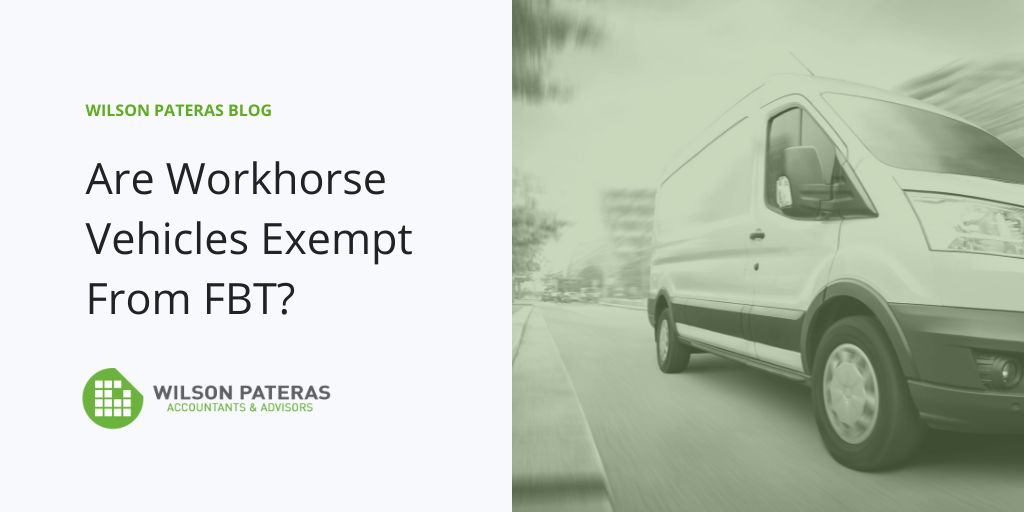
What is a Workhorse Vehicle?
Workhorse vehicles are generally exempt from the car fringe benefit rules, provided they are only used for work related travel including home to work travel and private use of that vehicle is restricted to minor, infrequent and irregular use. For example, irregular dropping off / picking up children to school on the way to / from work. Where the private use is more than minor, infrequent and irregular a residual fringe benefit has been provided and there is a different method to work how much FBT is payable.
A workhorse vehicle is a panel van, utility (ute) or other commercial vehicle (that is, one not designed principally to carry passengers) such as a dual cab ute with a carrying capacity of more than one tonne.
Safe Harbour New Provisions
The ATO has released some safe harbour provisions that if you can satisfy, you will be safe in the event of an FBT audit.
The safe harbour provisions will apply when:
- An employer provides an eligible vehicle to a current employee
- The vehicle is provided to the employee to perform their work duties (e.g., a utility truck provided to a delivery driver or a panel van to a tradesperson)
- The employer has a policy in place that limits private use of the vehicle and obtains assurance from your employee that their use is limited as stated under the travel limit requirements.
- The vehicle had a GST-inclusive value less than the luxury car tax threshold at the time the vehicle was acquired (the luxury car tax threshold for the 2024 income year is $84,916 for fuel efficient vehicles or $71,849 for other vehicles – please note this is different to the income tax depreciation limit); and
- The vehicle is not provided as part of a salary packaging arrangement and the employee cannot elect to receive additional remuneration in lieu of the use of the vehicle.
It is important for employers to understand that they should satisfy each of the requirements highlighted above on a per-vehicle basis for the safe harbour guidelines to apply. It can therefore be possible for an employer to be entitled to apply the safe harbour guidelines in relation to some eligible vehicles held in their fleet, whilst other vehicles can be ineligible for the concessions contained within PCG 2018/3.
An employee’s private use of an eligible vehicle will be regarded as ‘minor, infrequent and irregular’ for the purposes of the FBT exemptions contained under S.8(2) and S.47, where the private use of the employee (and/or their associate) is limited to the following:
- Any diversions for private travel between the employee’s home and their place of work and these journeys add no more than two kilometres to the ordinary length of that trip (e.g., dropping children off at school on the way to work);
- No more than 1,000 kilometres in total for each FBT year are taken for a wholly private purpose (i.e., multiple journeys); and
- No single, return journey undertaken by the employee that is wholly private purpose exceeds 200 kilometres.
The above provisions only allow for a very small amount of private use. Many employers will have employees that fall outside these guidelines. This is not necessarily a sign that those employers will now be subject to FBT. It just means that the safe harbour provisions cannot be applied in those circumstances and the old interpretation of workhorse vehicles will need to be applied, which requires specific consideration of determining minor use when assessing eligibility to exemption. Note that the ATO take a narrow view of what is considered minor use.
Speak to Wilson Pateras for more information
If you would like to confirm that your workhorse vehicles qualify as exempt benefits and ensure that you employees complete their annual declarations, please contact your advisor at Wilson Pateras.





